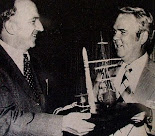We don't just have a revenue problem in this country -- we have a values and priorities problem.
Matt Ryan, the mayor of
That counter will offer a constantly changing estimate of the total price
In doing so, he’s joining a growing chorus of mayors, including
A Hard
Like so many post-industrial rust-belt communities,
These days, however, even the smartest and scrappiest of mayors still has to face grim reality. In July 2009, as the city began developing the 2010 budget, Ryan projected a $7 million shortfall. Contributing factors included a likely $700,000 decline in sales tax revenue, ever rising healthcare costs, increased pension contributions to replace funds lost in the market during the collapse of 2008-09, and a $500,000 drop in the return on the city's investment portfolio.
With worse times ahead, thanks in part to the projected end of federal stimulus money and a city drained dry of reserves, Ryan has had to face a classically unpalatable choice: raise city sales taxes from 7% to an unheard of 24% or cut city jobs. He chose jobs, as have the vast majority of mayors and governors across the country, eliminating 39 of them. In the process, he sought greater program efficiencies and wrestled with ways to increase city revenues while cutting ever closer to
It was in the context of this kind of local pain that Ryan was stunned to discover just how much of Binghamton’s taxes were going to the military and to our distant wars, and how little was coming back to Binghamton in the form of aid and services. “When I first saw the cost of war numbers and made the connections,” Ryan remarks, “I had to wonder if we're ever going to get our priorities straight as a nation. It's like we're facing an attack on government. As a mayor, I can see so clearly what increased federal spending could do for the people of my city.”
Ryan's message doesn't resonate with all of his constituents -- some have walked out on his public appearances -- but he's used to controversy and convinced that Americans had better get their heads straight soon. “People are hurting so bad,” he insists, “that, like it or not, we're all going to have to look at things seriously if we want our situation to change.”
Heads should swivel, he thinks, when faced with the $138.6 million
For a small city with an annual budget of $81.1 million, $138.6 million would be a hefty sum, even in non-recessionary times. For the same amount of money, Ryan could fund the Binghamton city library for the next 60 years, or pay for a four-year education for 95% of the incoming freshman class at the State University of New York at Binghamton, or offer four years of quality health coverage for everyone in Binghamton 19 or younger, or secure renewable electricity for every home in the city for the next 11 years. If he was feeling really flush, he could fully fund one-third of
For the same sum, Ryan could also authorize a $2,900 tax refund for every woman, man, and child in
For $138.6 million, Mayor Ryan could hire 2,765 public safety officers for a year, or simply refund the 12 police positions cut in the latest budget contraction and guarantee those salaries for the next 230 years. Ridiculous? These days, no one is laughing in
A Community Starved by War
As tax day looms on April 15th, Ryan increasingly thinks about where
He’s disturbed by how
According to the tax-day analysis of the National Priorities Project (NPP), an overwhelming 218 of those dollars went to pay for military expenditures and interest on military-related debt (generated, in part, by current war spending). The next highest amount -- $137 -- went to healthcare, including Medicare, Medicaid, and the Children's Health Insurance Program.
In 2009, $67, nearly 10 cents on every tax dollar, went to an aggregated category of spending NPP has titled “government,” tripling it in a single year, largely thanks to the Troubled Asset Relief Program (TARP), otherwise known as the bank bailout, whose cost every community in America has had to shoulder. Fifty-eight dollars (8.5 cents on every income-tax dollar) went to increased unemployment insurance payments and job-training initiatives, also a rise from the previous year.
Not surprisingly, the $15 that went to elementary, secondary, higher, and vocational education in 2009 represented a drop from 2008, a loss of a penny on every tax dollar. There’s no way, of course, that Mayor Ryan's dream of free, quality education from kindergarten to college is likely to happen on but 2% of every individual federal income tax dollar. Nor will we usher in the green techno-revolution that he and President Obama both support, by spending 2.5 cents on every dollar for the combined categories of the environment, energy, and science, and another 1.3 cents of every dollar on transportation.
“It's a double whammy," Ryan says. "We have a revenue problem and a values and priorities problem in this nation.”
Some desperate city leaders have suggested that the Mayor cut workers' pensions to help close the city’s budget gap. Matt Ryan doesn't see that as a solution to anything. “I have secretaries making $25,000 or $30,000. I'm not about to cut their net, such as it is. We have to think long haul. We have to look at fundamental changes if we're going to make it as a country. We should all be talking about this -- all the time.”
A construction crew will soon arrive to install
Jo Comerford is the executive director of the National Priorities Project. Previously, she served as director of programs at the Food Bank of Western Massachusetts and directed the American Friends Service Committee's justice and peace-related community organizing efforts in western











